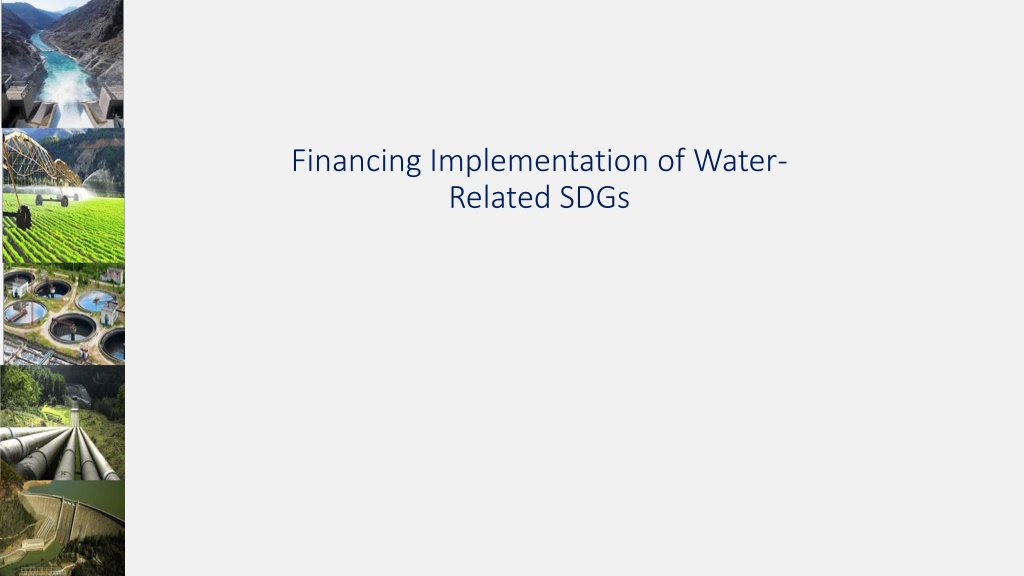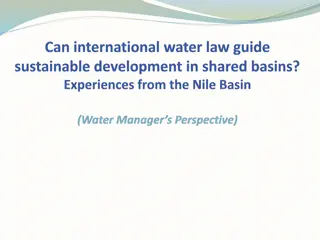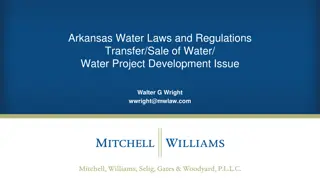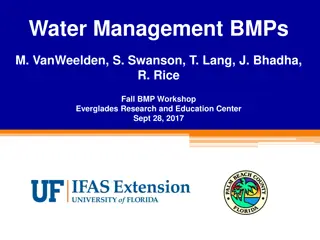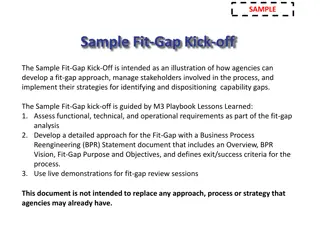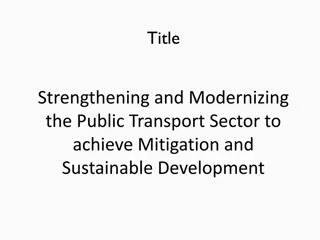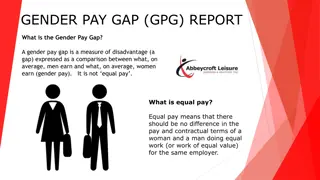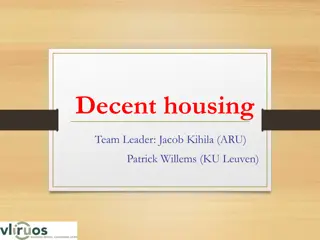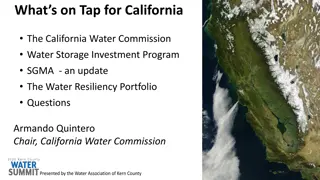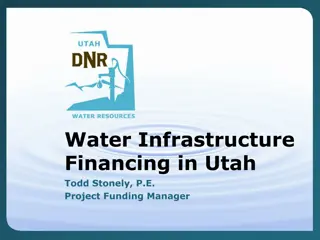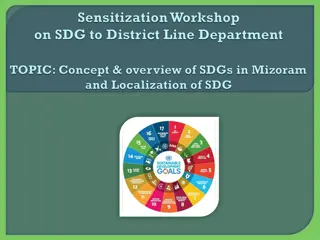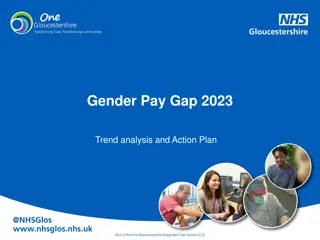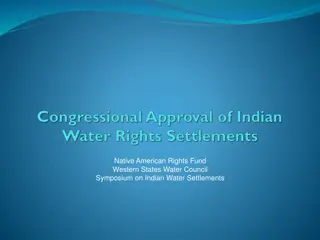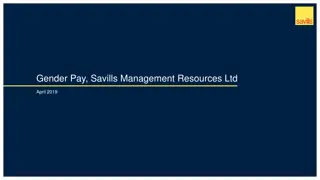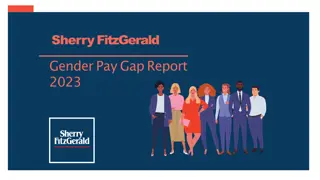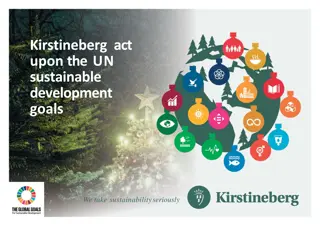Addressing the Funding Gap for Water-Related Sustainable Development Goals
The challenges in financing the implementation of water-related SDGs are discussed, highlighting the need for collaboration and innovative solutions. The widening funding gap in Asia presents a significant obstacle, with only 10% of annual requirements being met. The importance of leveraging financial instruments and creating funding programs to incentivize improvements in water and sanitation services is emphasized. A road map for success is provided, outlining key strategies to enhance investment and operational efficiency in the sector.
Download Presentation

Please find below an Image/Link to download the presentation.
The content on the website is provided AS IS for your information and personal use only. It may not be sold, licensed, or shared on other websites without obtaining consent from the author. Download presentation by click this link. If you encounter any issues during the download, it is possible that the publisher has removed the file from their server.
E N D
Presentation Transcript
Financing Implementation of Water- Related SDGs
SDGs for Water SDG Objective How Measured 6.1 By 2030, achieve universal and equitable access to safe and affordable drinking water for all. Proportion of population using safely managed drinking water services. 6.2 By 2030, achieve access to adequate and equitable sanitation and hygiene for all and end open defecation, paying special attention to the needs of women and girls and those in vulnerable situations. Proportion of population using safely managed sanitation services, including a hand-washing facility with soap and water. 6.3 By 2030, improve water quality by reducing pollution, eliminating dumping and minimizing release of hazardous chemicals and materials, halving the proportion of untreated wastewater and substantially increasing recycling and safe reuse globally. Proportion of wastewater safely treated. Proportion of bodies of water with good ambient water quality. 6.4 By 2030, substantially increase water-use efficiency across all sectors and ensure sustainable withdrawals and supply of freshwater to address water scarcity and substantially reduce the number of people suffering from water scarcity. Change in water-use efficiency over time Level of water stress: freshwater withdrawal as a proportion of available freshwater resources. Source: Open Working Group on Sustainable Development Goals and UN-Water.
Someone has to pay Public Finance Alone Cannot Close the Funding Gap Overwhelming Conditions that Must be Reconciled WSS Providers are financially weak Many financial instruments to leverage PPPs and commercial finance do not work in Water
There is No Magic Solution to the Financing Dilemma
The Widening Funding Gap in Asia The region is only funding 10% of their annual requirements. Water and Sanitation will require $800 billion over the period, or $53 billion annually. 300 million people still do not enjoy safe drinking water and 1.5 billion lack basic sanitation services.
Most WSPs in LDCs Dont Even Recover their O&M Cost *HIC High income countries, UMIC Upper middle-income countries, LMIC Lower middle-income countries, LIC Low income countries Source: World Economic Forum (2014).
Road Map for Success Know What s Needed, Assign Responsibilities & Adjust With Progress Create Funding & Oversight Programs to Incentivize LGUs Improve Investment and Operational Efficiency of WSPs Bring in Select Appropriate Financial Instruments Coherently Price Services Commercial Banks Source: Author s elaboration
Prioritize investments with highest economic returns. Extract all efficiency gains, particularly for NRW and collections, from a poor performing WSPs by focusing on performance improvement programs before venturing into expansion and diversification strategies. Correct the Business Model of WSPs Determine the tariff that is justified to an appropriate level of service. Create an incentive program for management and staff to reward them for their achievements. Rebalance services with the need to remain financially sustainable. This means restructuring services based on the principal of what customers want and are willing to pay for . Resist from creating unutilized capacity and restructure debt overhang that cannot be adequately serviced. Invest in operating systems that can improve management decisions in key performance indicators. Expand cautiously once the business model has been corrected.
Carry out thorough consumer survey on affordability and willingness to connect. Improve customer billing systems to collect consumption and user data for tariff analysis assessment. Focus subsidies on the poorest segments of the population. Modify tariff structures to better reflect consumption patterns of different income groups and of household and businesses, and create more progressive block tariffs to promote conservation efforts. Ensure proper consideration for high consumption patterns on wastewater treatment costs and climate impacts on water resources. Ensure water bill remains below a threshold of 4% of total income for the very poor segment of the population. Depoliticize the water tariff by focusing on the cost of the service and not of water itself. Pricing Water & Wastewater Coherently
Select WSPs that have some basis for leveraging commercial finance. Initiate a dialogue with domestic banks for engaging in the sector. Understand their concerns and transfer knowledge of proper diagnostic techniques. Accurately assess PPPs against their cost versus the value they bring. Water PPPs have not been widely successful, and there have been many failures. Plus, they are the most expense and least flexible form of finance, making smaller transactions quite costly and in many respects, not affordable to consumers. Create blended financing arrangements for mobilizing commercial finance by utilizing public funds to leverage commercial financing. Ensure that the financing structures are not based on significant tariff increases. These will not work and are considered risky for private lenders. Crowd-in Commercial Finance into The Sector
Focus on Viability Gap and Blended Facilities to reflect the financial status of the preponderance of WSPs. Focus on enhancement mechanisms that are replicable within the domestic environments such as: Collection Accounts. Senior Loan Status. Pledging of Tax Revenues. Transfer Payments Intercepts. Select Appropriate Financial Instruments Solicit donor or IFI support for program design, but ensure mechanisms are replicable without their support. It makes no sense to spend so much time and effort on stand-alone projects that have minimal impact on replication to a wider market. Develop a strategy for financing climate change risks, particularly for natural disasters.
Financial Strategy for Disaster Risk Management Source: O. Mohul et all, Financial Prospects Against Natural Disasters From Products to Comprehensive Strategies, An Operational Framework for Disaster Risk Financing and Insurance, The World Bank 2014.
Creating Funding and Oversight Programs for Incentivizing Implementing Entities Create an independent regulatory office. Develop financial sustainable objectives for tariff analysis and adjustments. Maintain and publicize a national benchmarking system. Develop a performance-based national transfer system to LGUs. Contribute to close the viability gaps of economically justified investments and developing a straightforward methodology for financial support that is grounded and economic and financial principles, not political ones.
Develop a concise financial strategy for all water subsectors, for improving performance efficiency, cost recovery, investment planning and mobilizing finance including commercial sources. Improving the Planning and Implementation Process for Achieving SDG Develop a dynamic sector financial model(s) to use for updating progress and to modify assumptions along the way. Break down SDG goals at the municipal level and major urban centers and get buy in from local government officials particularly mayors for implementing the strategic plan. Assign roles and responsibilities to national and subsector entities for development of the Individual strategies, implementation, monitoring and update. Establish tripartite agreements between nation government, each local government and WSP management. Targets Develop information system for automatic updated to the national plan from all sector agencies. Benchmark performance of key performance indicators.
Business as usual will not produce results! But a decisive and correct implementation approach will bridge the funding gap and makes SDG targets achievable. The time window is closing is still on our side!
